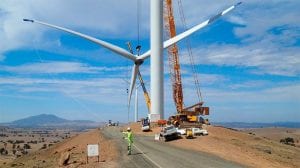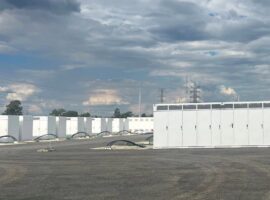PRESS RELEASE
Development of Australia’s first straw-fuelled power plant is a step closer with the Yorke Biomass Energy project receiving a $476,000 funding grant from the South Australian Government.
The grant, which forms part of the State Government’s Renewable Technology Fund, will be used to finance the feasibility assessment of Yorke Biomass Energy’s demonstration project at Ardrossan on South Australia’s Yorke Peninsula.
The demonstration project will produce 15MW of power and showcase how a straw-burning generator can provide reliable 24/7 renewable power, while also delivering new jobs, new incomes for farmers and lower power prices.
Once the demonstration project is complete, Yorke Biomass Energy plans to replicate the project across South Australia in remote and off-grid locations, particularly where crop farming and mining projects are located. In fact, several other potential locations have already been identified, primarily on the state’s Eyre Peninsula, to produce up to 150MW of base load power.
Yorke Biomass Energy Chairman Terry Kallis says the State Government funding grant is a major boost for the continued development of straw-fuelled power.
“This funding grant will enable us to take some big steps forward with our demonstration project and proceed through to financial close during the second half of 2018,” said Mr Kallis.
“It’s also a fantastic vote of confidence in the project by the South Australian Government, which continues to look at innovative new ways to provide cheaper, greener and more reliable energy in South Australia.”
The demonstration project will be located near the Ardrossan West substation and be based on existing plants operated by global infrastructure company Acciona, which is Yorke Biomass Energy’s exclusive contractor for engineering, procurement and construction.
Approximately 90,000 tonnes of straw per annum is expected to be required from local farms to operate the Ardrossan plant, which will create up to 40 long-term jobs through the plant’s operation, as well as through the ongoing collection and transportation of straw.
Yorke Biomass Energy involves a novel cooperative-style business model in which local biomass suppliers own and operate a company called Yorke Biomass Supply, which has an exclusive contract with Yorke Biomass Energy for the supply of suitable biomass.
Importantly, biomass energy has the highest per MW employment creation of any form of renewable energy, so the potential for new jobs in regional South Australia is significant given the planned pipeline of projects. For example, ongoing jobs created by a 15MW biomass project is equal to a 500MW wind farm project.
“In addition to the potential 150MW of projects in SA, we have identified the possibility for a further 450MW in other states including Victoria, New South Wales and Western Australia,” said Mr Kallis.
“We believe straw-fuelled power generation can play an important role in Australia’s energy mix. It can help reduce the cost of electricity and create new economic benefits to local rural communities, as well as helping resolve issues between mining and agricultural pursuits in a win- win manner.
“There are also significant environmental benefits on offer, such as improvements to sustainable local farming in terms of soil health, crop rotation and weed management, in addition to reduced greenhouse gases and improved energy security.”
Yorke Biomass Energy is aiming for the Ardrossan power plant to be operational in early 2020.










